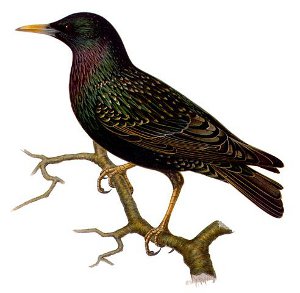
One last striking story about bird mimicry:
I was in the Outer Hebrides and I came across an abandoned derelict croft. It had no roof, but very substantial walls and in the gaps between the stonework was a starlings’ nest. I could hear the birds inside, and eventually one of the starlings came to defend its territory. I heard straight away that it wasn’t just the usual rambling song. It started to mimic a Corncrake, a species that is very rare in mainland Britain. It did this bird’s buzzing repetitive song, but then it immediately went into other sounds that seemed familiar and had a strong rhythm to them. As I was listening I was looking around and could see the remnants of farm machinery, including an ancient tractor that had not moved for 20-30 years. I realised this bird was singing the song of some of this machinery. It was singing the song of a mechanical pump that had obviously been active around this farm, and used by the people who had lived here.
I wasn’t listening to the same starling that heard these original sounds. These copied sounds are usually passed on from parents or neighbouring birds so that a young bird absorbs and then duplicates them. The strange thing was that I was recording the sounds in what had been somebody’s living room, a place that had obviously been full of the conversations of family life over generations and which had passed into history. Yet the birds had returned and taken it back — claimed this space and these rocks — and were singing their own song. And they were singing the songs that were around when the people were here.
— Chris Watson of Tyne and Wear, U.K., quoted in Mark Cocker’s Birds & People, 2013
